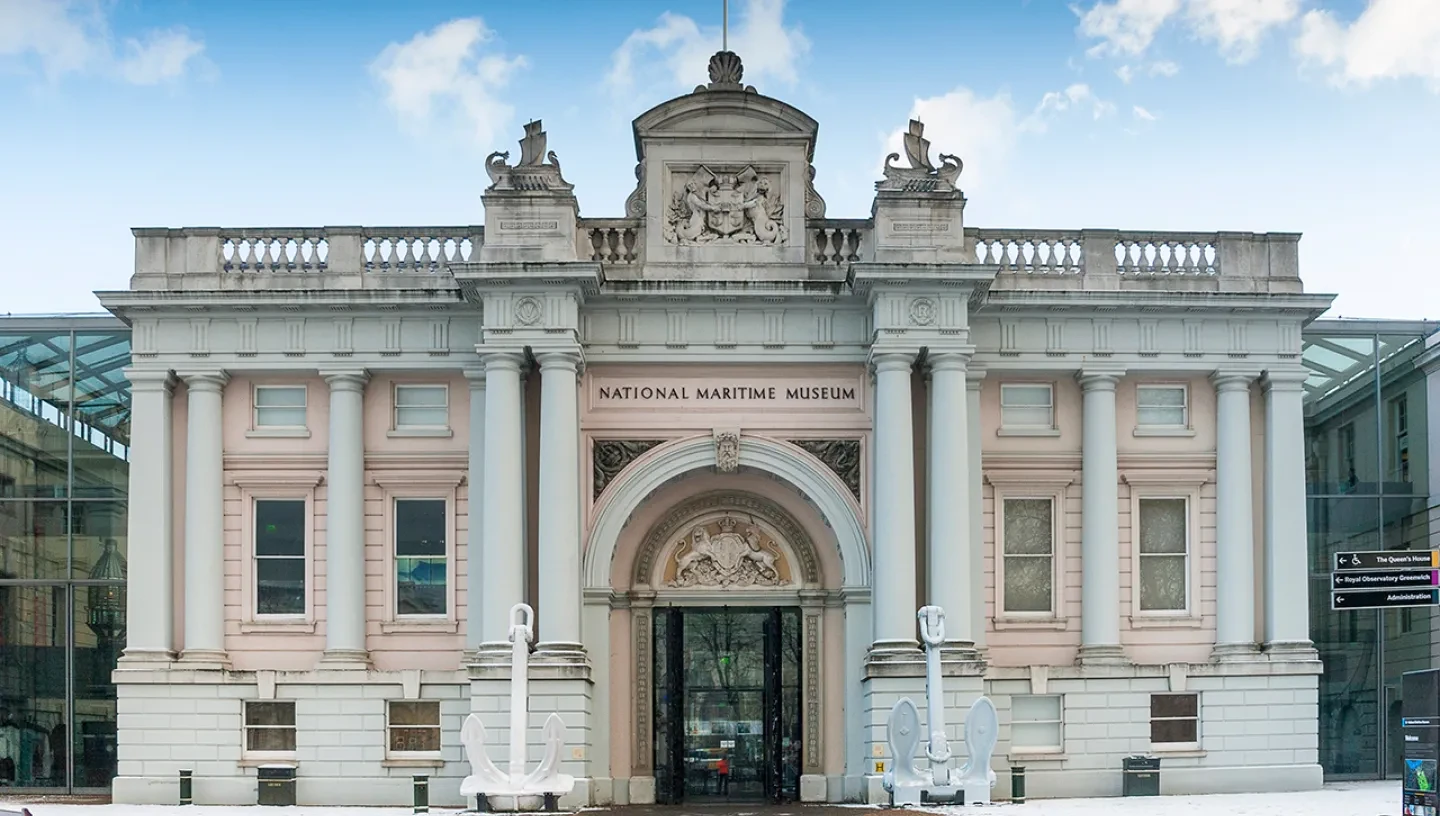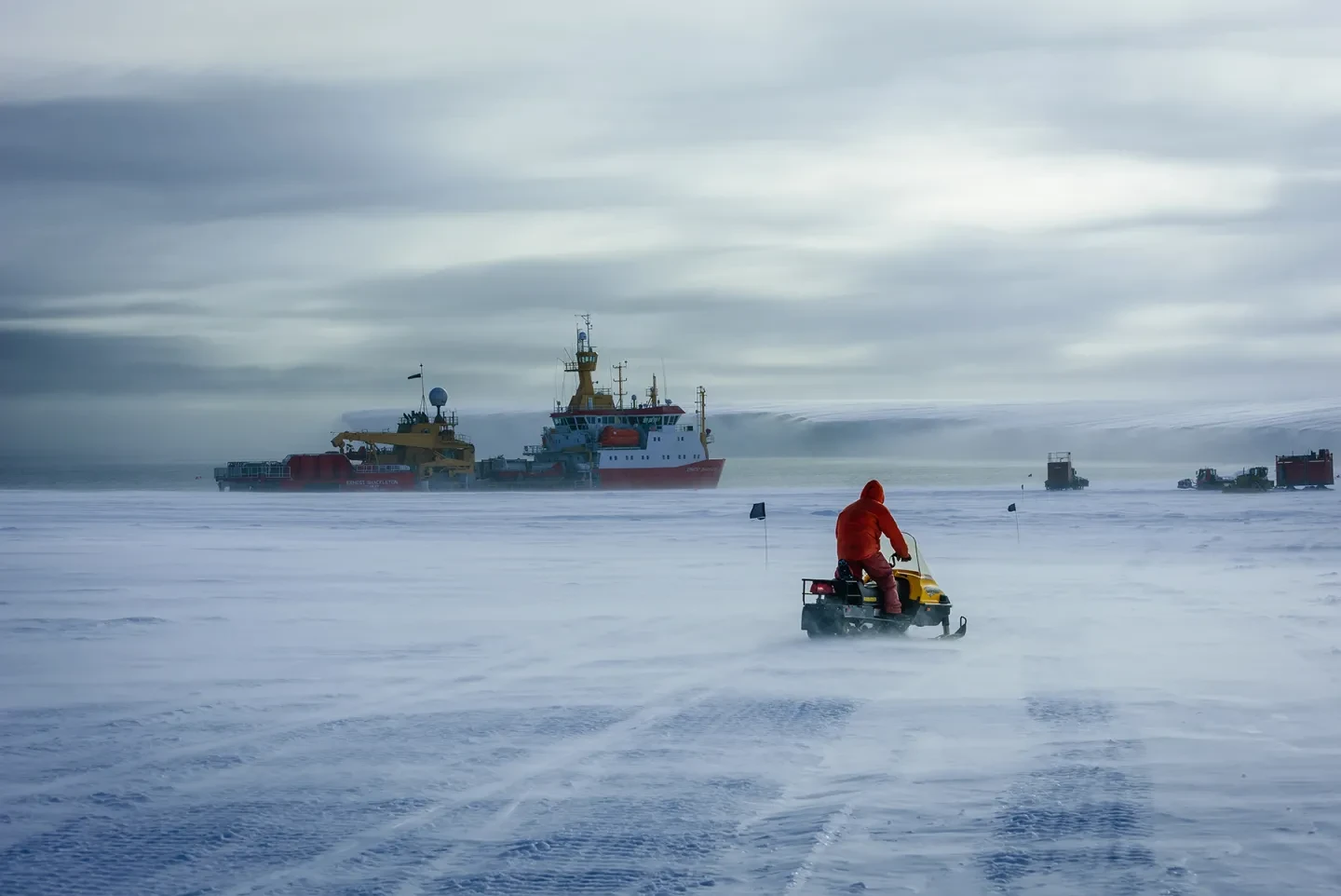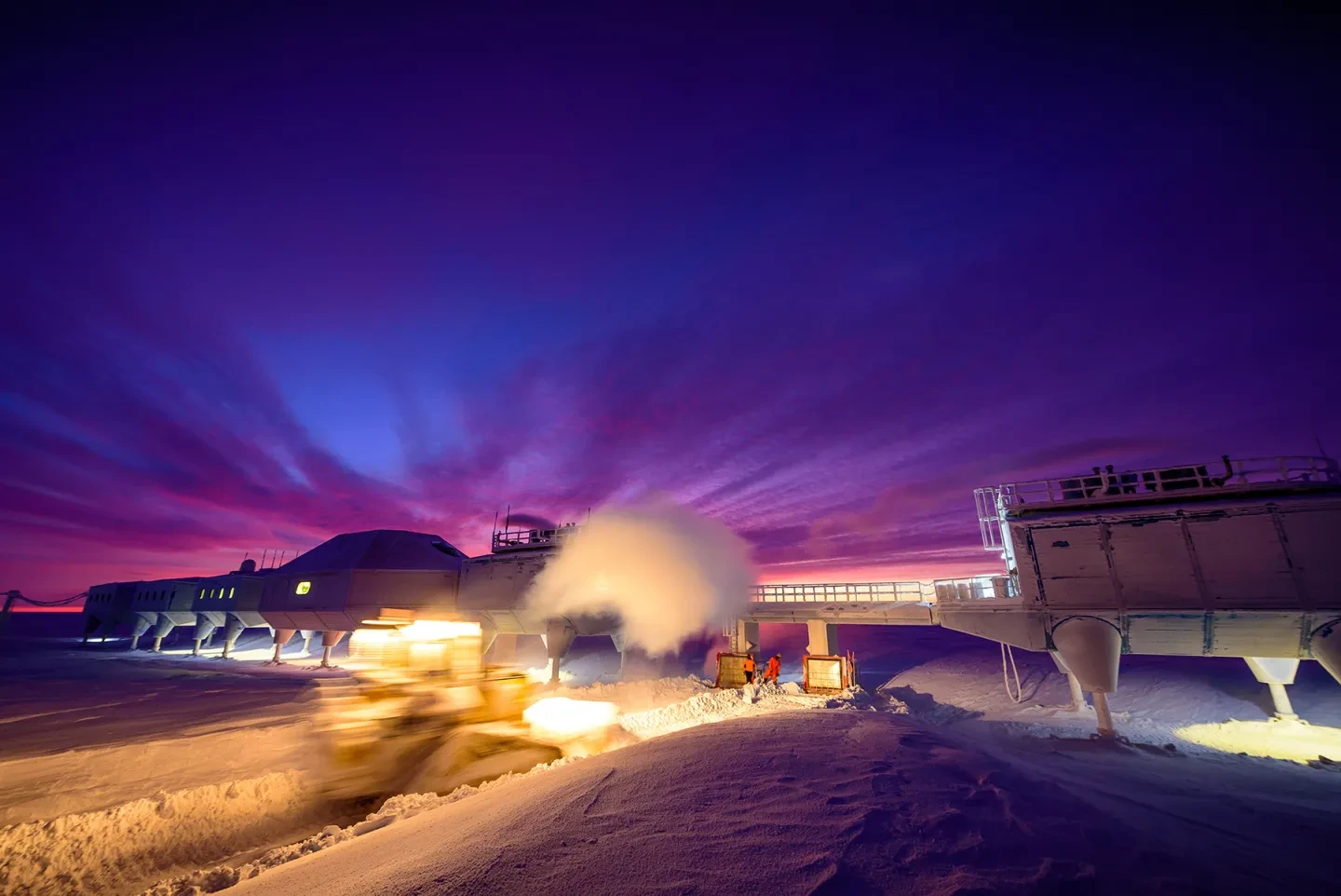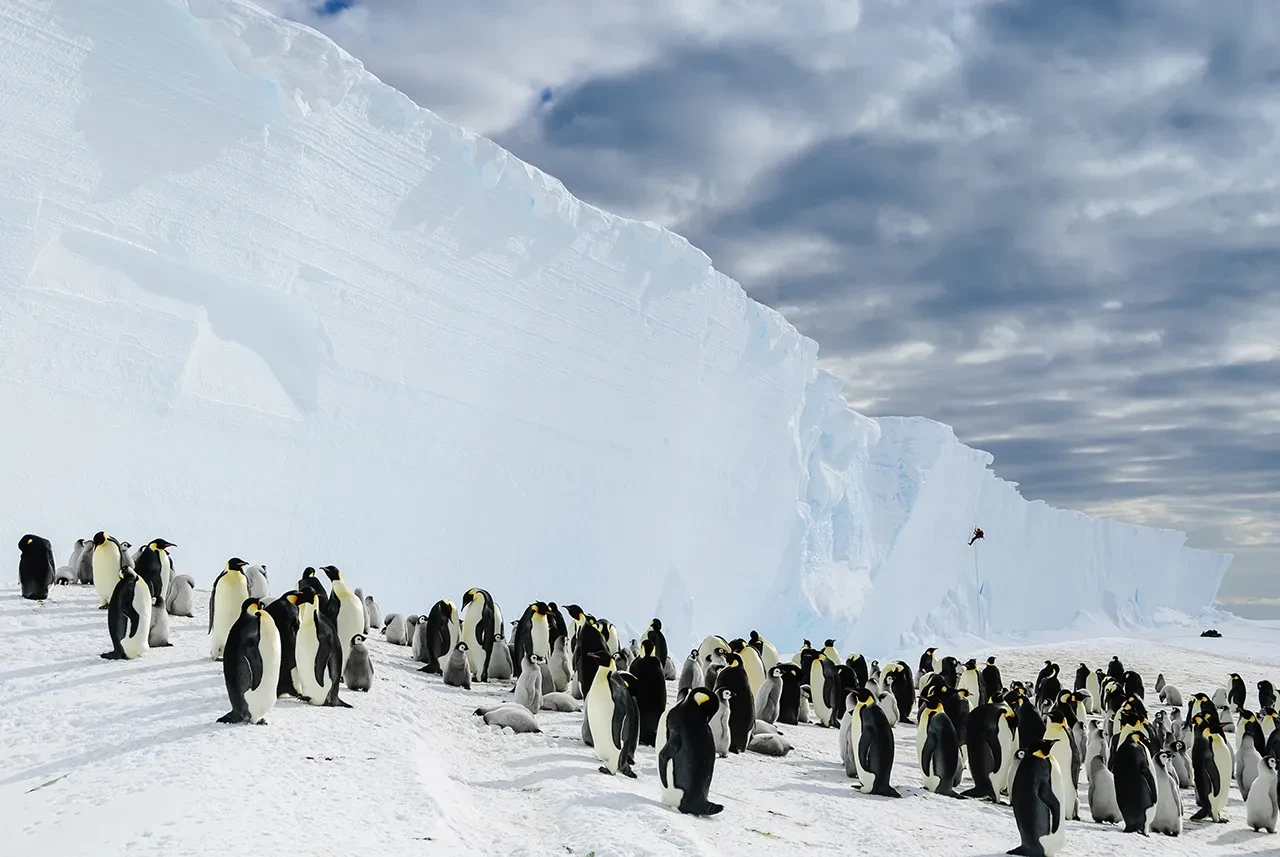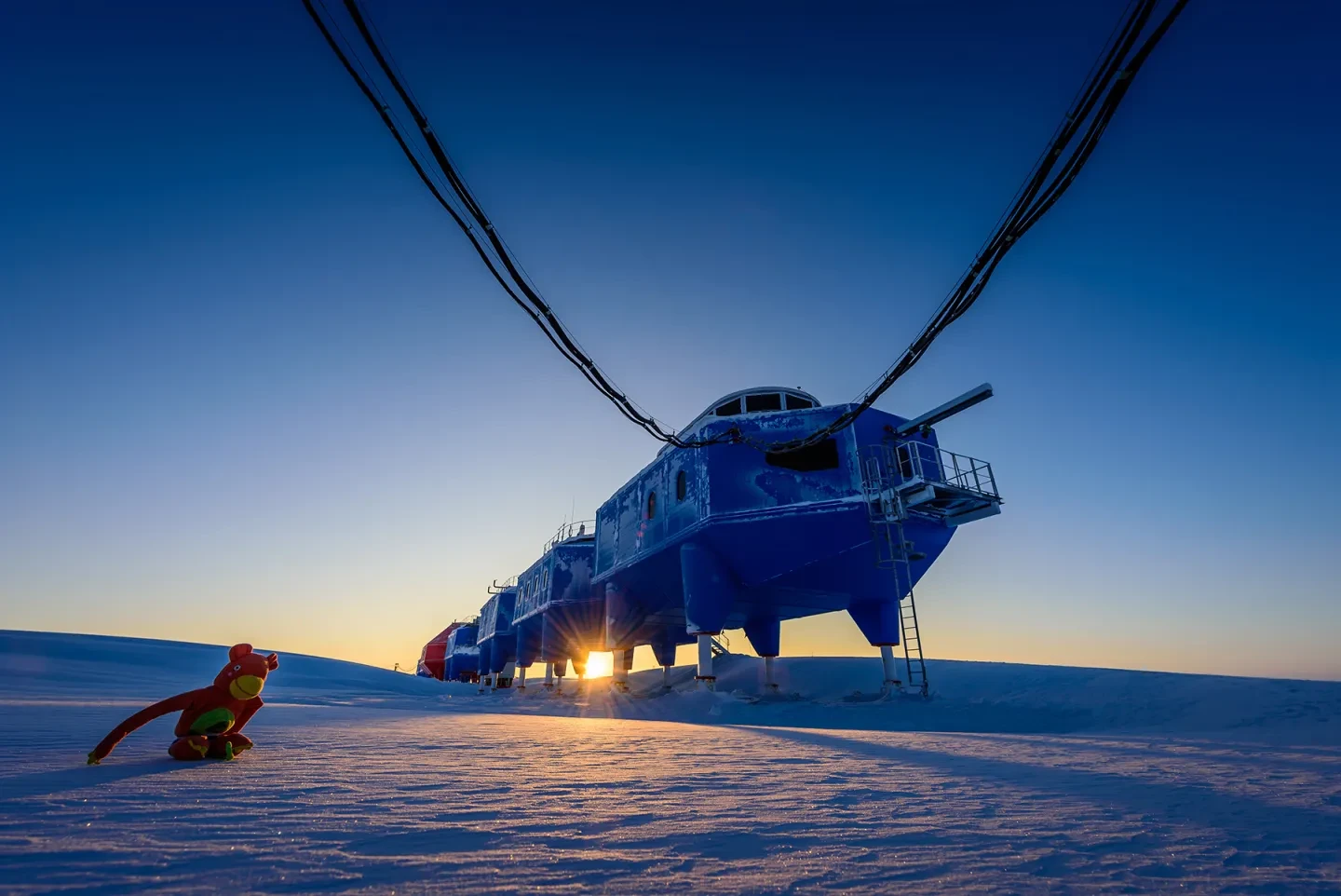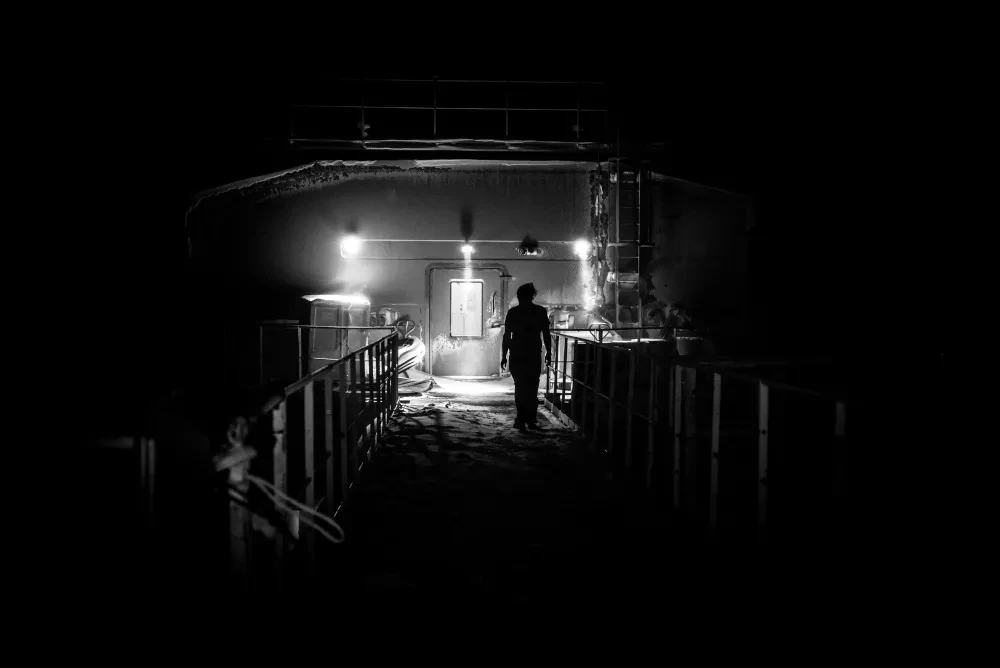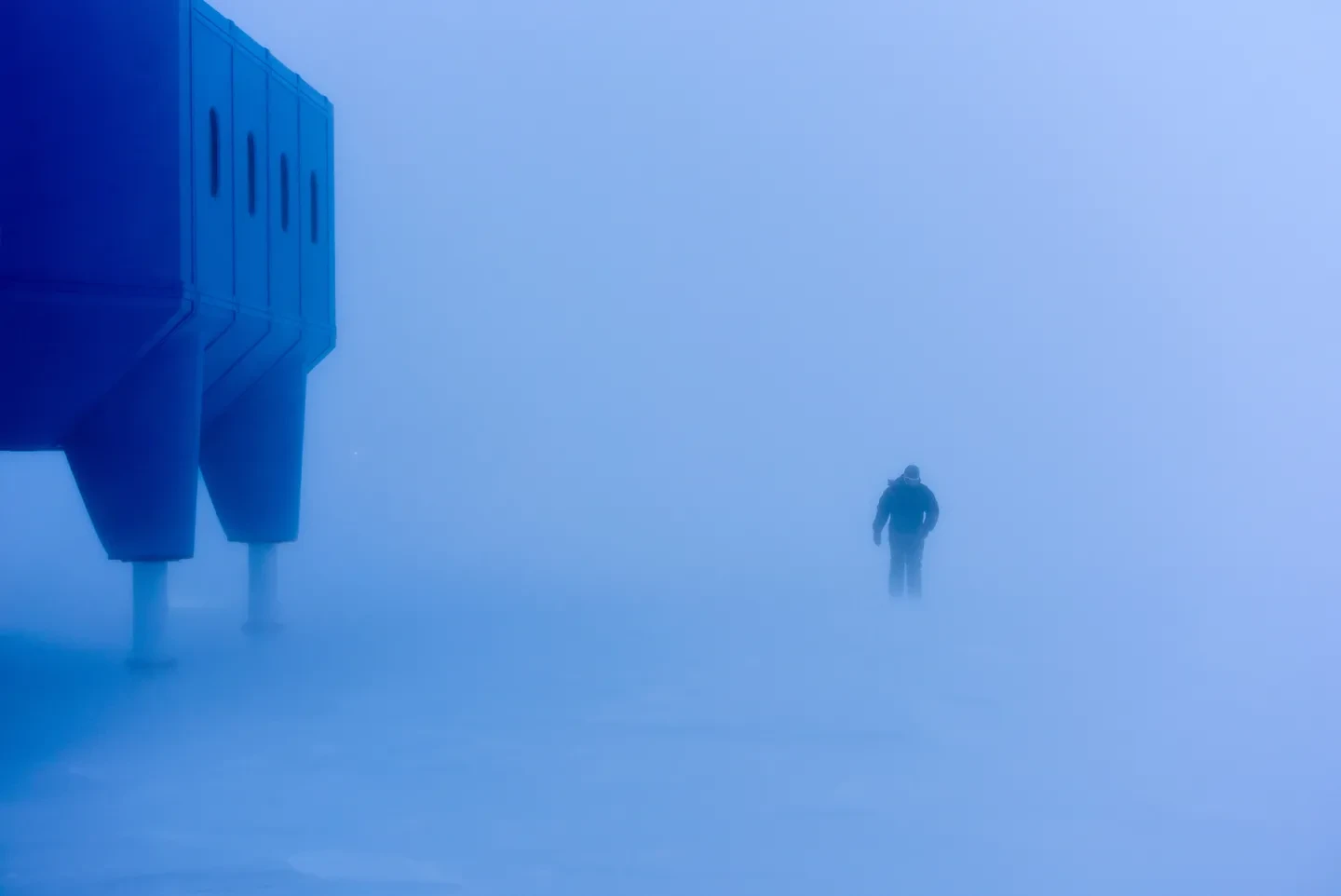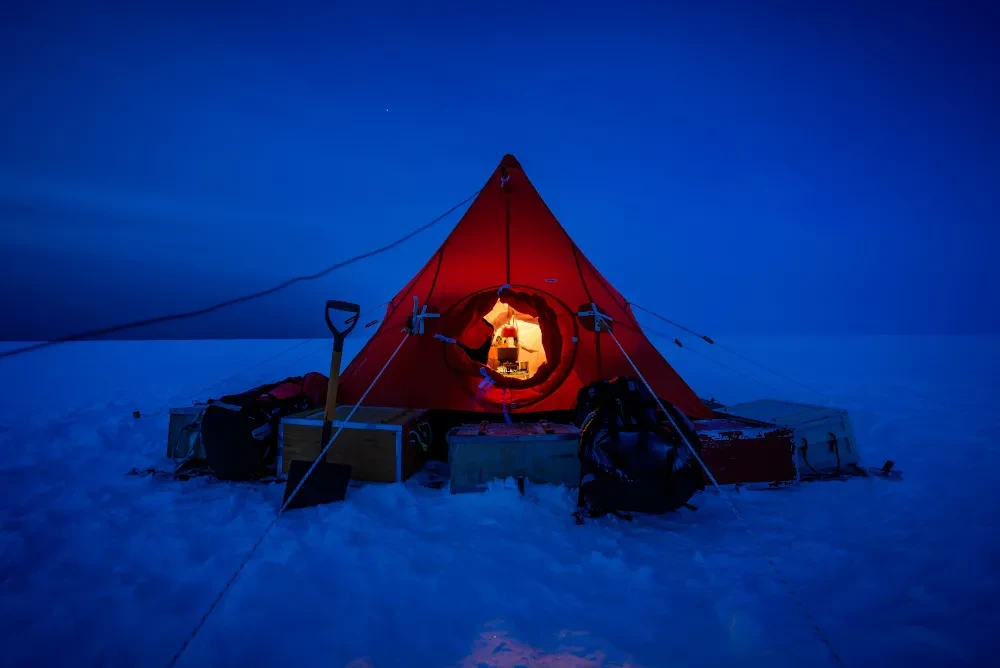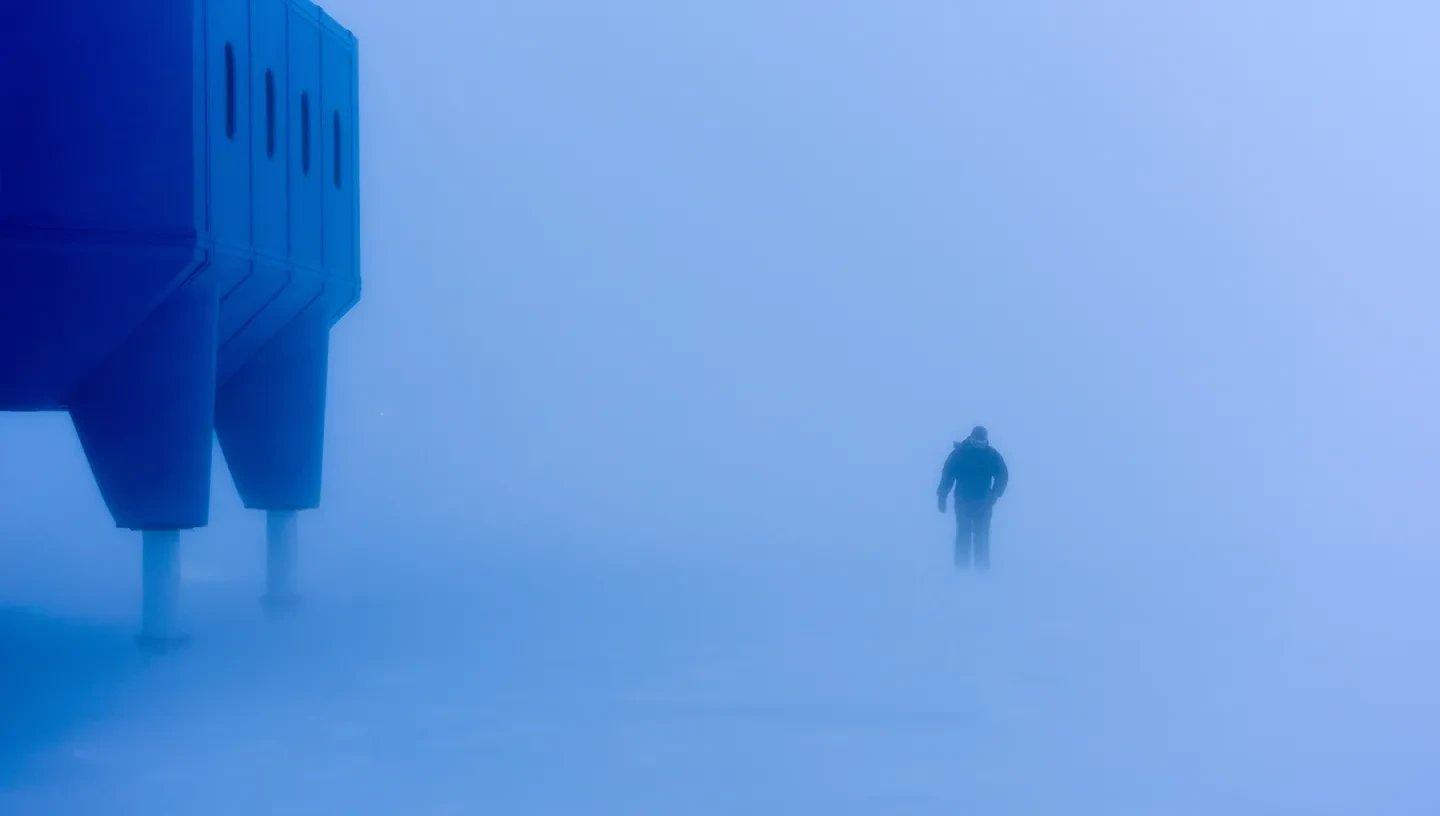
If someone was to spend a winter in Antarctica it is certain they would have amazing stories to share. Having spent two winters at the British Antarctic Survey's Halley VI Research Station, Data Manager Michał Krzysztofowicz has twice as many.
Listen to him talk about his lived experience in one of our planets most challenging environments and read his interview highlighting his most vivid memories ranging from the challenges and hardships he faced, to his day-to-day routine, and his overall experience with British Antarctic Survey.
Polar regions are some of the worlds’ least explored places. What was your first thought when you finally reached the Antarctic and what surprised you the most when you first travelled there?
I actually couldn’t believe I finally made it to Antarctica. It was an overcast day and we moored to the edge of the Brunt Ice Shelf. On the port side all you could see was the Southern Ocean dotted with icebergs. On the starboard side all you could see was the flat white expanse of the Antarctic Ice Shelf, and I was just about to walk on it.
In more general terms it’s not until several weeks pass after you get there that the reality sinks in. Before that, I think I was simply in awe.
In terms of what surprised me the most, it has to be how isolated we were, and the realisation of how vast the area is – how far it is from everywhere. I also remember thinking how small the Halley VI modules look from the outside, yet how spacious they feel inside.
What was your experience working for British Antarctic Survey like?
Without a shadow of the doubt it was the best job I’ve ever had. Most people are truly passionate about the work they’re doing and there’s this sense that what we were doing is meaningful. It’s also an awesome adventure and you get to meet fantastic people, some of whom have become friends for life even if we don’t stay in touch very often.
While there, over the course of two years, did you notice any signs of climate change?
Climate change is a phenomenon that develops over hundreds of years, or at least decades. I’ve only been in Antarctica for a total of two and a half years. My stay there, although somewhat lengthy in human life terms, was nothing but a blink of an eye compared to the rate of climate changes. I had no comparison of what it had been like 50 or 100 years before. I think climate change is more apparent when looking at satellite data, or even by analysing meteorological records, which unfortunately don’t go back more than 100 years or so in case of Antarctica.
The things we did see, like changes in the sea ice extent between two consecutive years, or warmer days, could have been (and most likely were) an anomaly.
This is not to say there is no climate change – I think science pretty much agrees that the climate is warming up, and my understanding of the issue as a non-scientist is we’re not exactly sure how much of that is caused by humans, and how much is a natural cycle of periodic cooling and warming up of the planet.
Could you describe a typical day at the Halley VI Research Station?
There’s probably no such thing as a typical day at Halley, or any other research station in Antarctica, but from the perspective of a Data Manager (which is the job I had when I wintered there) it’s something like this (some poetic licence may or may not apply):
1. Wake up, shower, brush my teeth, dress up, and wonder over, sleepy-eyed, to the canteen to make your own breakfast. Bring a coffee mug to my desk, running in just shorts and a t-shirt across the bridge in -45°C. Should have worn at least flip flops!
2. Check the email, check the status of all servers and applications ingesting data from the science experiments. All running well.
3. 10:30 – Smoko (snack break)! I hope there’s some bacon baps there! Run across the bridge. I should really wear those flip flops.
4. Back to the Science Office and do some more work. Typically, some coding in Python, or work on Automation with Ansible. Sometimes change the data backup tape in the robot.
5. 13:00 – Lunch! It’s a nice and sunny day out there (albeit very short – only a few hours); about -25°C and only 10kts of wind – eat quickly and then get changed for a quick kite-skiing session outside the modules. It’s cold initially but once you get going it’s pretty nice and it’s a good workout. Make sure not to have too much skin exposed on your face. And wear sunscreen!
6. Back to the modules to do more work. More coding, responding to a request from a Cambridge-based scientist responsible for an experiment, to change the way the data is plotted (visualised).
7. 15:30 – afternoon smoko! Back to the canteen for a cake, tea or coffee and some banter with the other guys.
8. At my desk again, doing more coding. Help the electronics engineer with a problem he has with the experiment he looks after.
9. 18:00 – clock off for dinner. Nice, we have a curry night. Thankfully I’m not on Gash* (general cleaning duty) today. Quick phone call home, do some emails or check your favourite social media (hopefully the science data transfer has actually caught up and the Internet link is not fully saturated). There’s a movie night on tonight. Later in the evening we hear a radio call about the Aurora (Southern Lights) – the sky is very clear (which doesn’t happen that often) and the show is pretty intense. Go outside to take pictures. Try not to touch the body of the camera with my cheek when looking through the viewfinder!
10. Bedtime. Rinse and repeat!
*Gash is a general cleaning duty. Each person is on Gash for a day once every 12 days in case of Halley (the duty simply rotates to involve every member of the team except for the Chef). When a person is on Gash, they help out in the kitchen, do the dish washing, clean up in the canteen and other common areas, plus each day of the week there are different light cleaning duties assigned which should normally take about an hour or so. For example on Mondays this could be cleaning up all showers and toilets, on Tuesdays it could be mop and wash the floors in all corridors, etc.
How did you cope with the isolation?
I didn’t mind the isolation at all, to be honest. I think it helps to be mildly introverted. I actually loved it there. I love the feeling of being a part of a very tightly knit society – there were only 13 of us for the winter. I loved living in a bubble, with very little concern to what was going on in the world outside of our own.
At the same time, I know some people struggled. I think the worst time is between Mid-Winter and the arrival of the first aircraft. It’s “downhill” but at the same time for some people that period feels like it’s dragging much longer than the first half of the winter.
It helps to have a personal project, outside of work, to do over the Winter. For me it was photography. For my second Winter, I set out to take pictures every single day for the whole 2016. The effect of this project is Antarctica366 https://antarctica366.com/ where you can see daily highlights (and more) from my experience of living and working at a research station in Antarctica.
How did you cope with the extreme cold?
As they say, there’s no bad weather, there’s only bad clothing. We were very well kitted out and there really was no reason to be cold for most of us. You play conservatively and it was drilled into our heads that no job or task is worth being too cold, or even worse, getting a cold injury. We had none.
With the extreme weather everything takes a lot of effort – even things like getting ready to go outside. You put on many layers of clothing, which in itself can be a bit restrictive and take a bit of time. No matter where you go, you take a few things with you at all times: spare hat, spare gloves, a radio, a torch, maybe a GPS or at least a compass; if you’re going anywhere outside of the perimeter, a hot flask, some chocolate bar. Most of the travel is on Skidoos or in a Sno-Cat, so you also take plenty of fuel, lots of food, tents, sleeping bags and mats, spare clothing, climbing kit and ropes. All this goes onto the Nansen sledge (towed behind the Skidoo), or is packed on the roof of the Sno-Cat.
And you really make sure you don’t expose any skin for too long.
What do you miss the most from the time you’ve spent in the Antarctic?
For me I think it’s the camaraderie, the mutual understanding of the experience we went through. And a certain lifestyle which is impossible to replicate “in the real world” (although sometimes I wonder which one is the real world).
